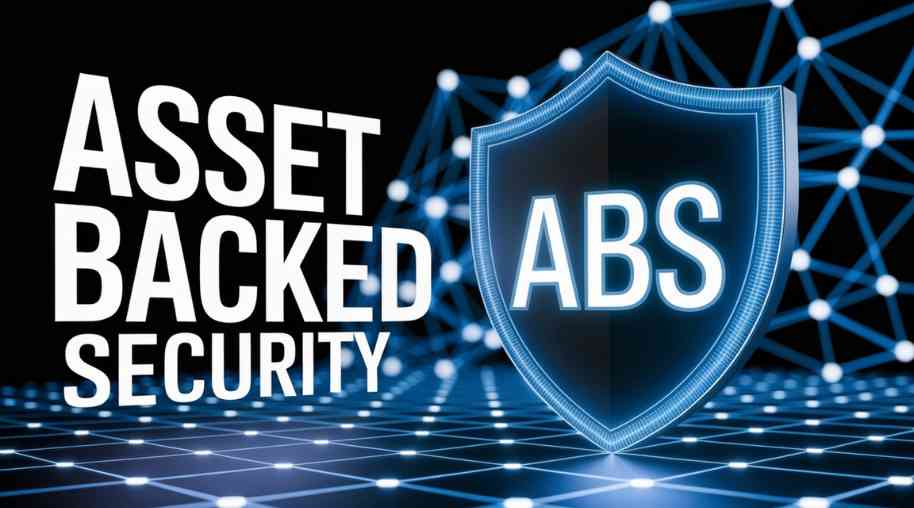ABS Full Form - Asset Backed Security
by Shashi Gaherwar
0 2079
Understanding Asset-Backed Securities (ABS): A Comprehensive Guide to its Function, Benefits, and Risks
In the world of finance, Asset-Backed Securities (ABS) have become a crucial part of investment portfolios for many investors. ABS provide an opportunity to gain exposure to a wide range of underlying assets such as loans, leases, credit card debt, and receivables. This article will take an in-depth look at the full form of ABS, its types, benefits, and risks, along with its role in modern investment strategies.

This article provides a comprehensive guide to Asset-Backed Securities, exploring their structure, benefits, and potential risks for investors.
What Are Asset-Backed Securities (ABS)?
An Asset-Backed Security (ABS) is a type of security that is backed by a pool of underlying assets, typically financial assets such as loans, leases, credit card receivables, or mortgages. The pool of assets is structured into a security that can be sold to investors. In essence, ABS allows companies to finance their operations or raise capital by converting their illiquid assets into tradable securities.
For example, a bank could create an ABS by pooling together its credit card receivables—payments that customers owe for using their credit cards. This pool is then sold to investors, with the investors receiving a portion of the payments made by the customers as the loans are repaid. In return, the bank gets immediate liquidity to lend more money or invest in other ventures.
How Do Asset-Backed Securities Work?
ABS are structured through a process known as securitization. Securitization involves pooling similar types of assets, such as auto loans, mortgages, or student loans, and converting them into a new financial product, which is then divided into different “tranches” or layers of risk. Each tranche represents a different level of risk and potential return, making ABS an attractive investment for a wide range of investors, from conservative to high-risk tolerance.
The basic structure of an ABS consists of three primary components:
- Underlying Assets: These are the financial assets that are pooled together, such as car loans, student loans, or mortgages. These assets generate regular cash flow (through loan repayments or lease payments) which will be distributed to investors.
- Special Purpose Vehicle (SPV): The SPV is a separate legal entity that holds the pool of assets. Its role is to issue the ABS to investors and ensure the cash flow from the underlying assets is paid out to them.
- Tranches: The ABS is divided into different tranches based on risk. The higher-risk tranches offer higher returns, while the lower-risk tranches offer lower returns. Senior tranches are paid first, and junior tranches are paid afterward, making the senior tranches less risky.
Types of Asset-Backed Securities
ABS can be classified into various types depending on the type of underlying assets. Some of the most common ABS include:
- Auto Loan ABS: These securities are backed by a pool of auto loans, which are loans provided to individuals for purchasing vehicles. Auto loan ABS are often seen as less risky because auto loans tend to have relatively stable repayment histories.
- Credit Card Receivable ABS: These are backed by the balances owed by credit card holders. Since credit card debt is typically unsecured, these types of ABS can be more volatile.
- Student Loan ABS: These are backed by student loans, which are loans provided to students to help pay for their education. The repayment history for student loans can vary, affecting the risk associated with these ABS.
- Mortgage-Backed Securities (MBS): Although technically a subset of ABS, MBS are one of the most well-known forms of asset-backed securities. They are backed by pools of residential or commercial mortgage loans and are heavily traded in the financial markets.
Benefits of Asset-Backed Securities
- Diversification for Investors: ABS offer a way for investors to diversify their portfolios. Since these securities are backed by a variety of assets, they can provide exposure to different sectors of the economy, such as auto loans, credit cards, and mortgages.
- Liquidity for Issuers: For banks and other financial institutions, ABS provide a way to raise capital quickly. By converting illiquid assets into tradable securities, issuers can access liquidity without needing to sell physical assets.
- Attractive Risk-Return Profile: The different tranches in an ABS allow investors to choose an investment that suits their risk appetite. Conservative investors can invest in senior tranches with lower returns and lower risk, while more risk-tolerant investors can target junior tranches for higher returns.
- Lower Interest Rates for Borrowers: Securitization allows lenders to access a wider pool of capital, which can result in lower borrowing costs for consumers. This is particularly true for asset classes like auto loans or mortgages, where securitization makes funding more efficient.
Risks of Asset-Backed Securities
- Credit Risk: The primary risk associated with ABS is the credit risk related to the underlying assets. If the borrowers of the loans or receivables in the pool fail to repay their obligations, the ABS holders may experience losses. This risk is particularly relevant in cases where the underlying assets are lower-quality loans or are from borrowers with a poor credit history.
- Interest Rate Risk: Changes in interest rates can affect the cash flow generated by the underlying assets. For example, if interest rates rise, borrowers may have difficulty repaying their loans, which could reduce the income for ABS investors.
- Prepayment Risk: ABS backed by loans or mortgages may face prepayment risk, where borrowers pay off their loans earlier than expected. This can happen when interest rates decline, and borrowers refinance their loans. Prepayment reduces the amount of cash flow generated by the asset pool, which may affect returns for ABS investors.
- Market Liquidity Risk: ABS can be difficult to trade in the secondary market, particularly during times of financial stress. This can make it harder for investors to sell their securities and realize a profit.
Asset-Backed Securities (ABS) are powerful financial instruments that allow companies to convert illiquid assets into tradable securities, offering a range of benefits for both issuers and investors. They help diversify portfolios and provide liquidity to financial institutions, but like any investment, they come with risks. Understanding the structure, types, and risks of ABS is essential for anyone considering investing in them or for those looking to better understand modern financial products.
As the market for ABS continues to evolve, both institutional and individual investors must stay informed and be aware of the potential pitfalls in order to make sound investment decisions. By thoroughly evaluating the underlying assets, market conditions, and risk profiles of different ABS, investors can better position themselves for long-term success.
Further Learning Resources
If you’re passionate about building a successful blogging website, check out this helpful guide at Coding Tag – How to Start a Successful Blog. It offers practical steps and expert tips to kickstart your blogging journey!
For dedicated UPSC exam preparation, we highly recommend visiting www.iasmania.com. It offers well-structured resources, current affairs, and subject-wise notes tailored specifically for aspirants. Start your journey today!

Share:








Comments
Waiting for your comments